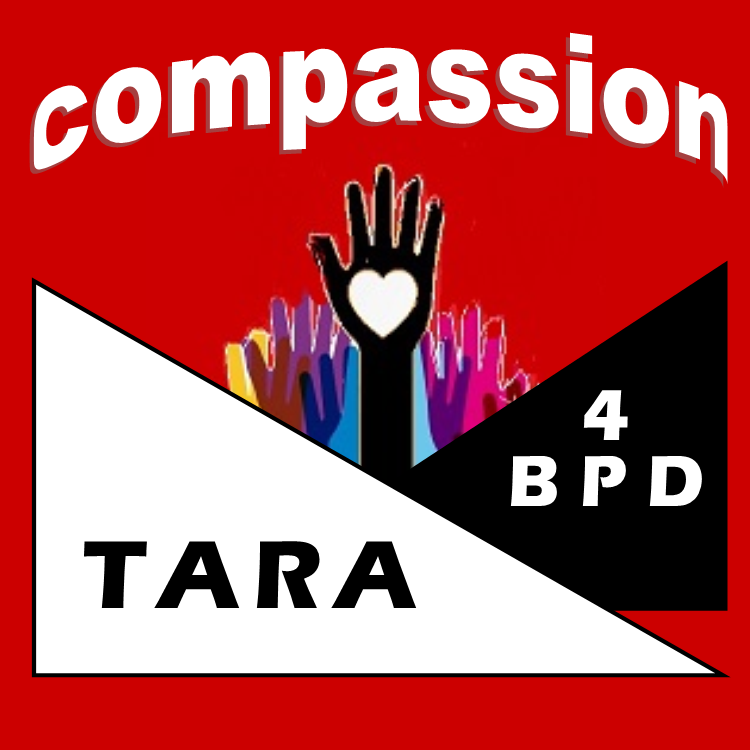RESEARCH & TREATMENT FUNDING: Psychiatric research and treatment fundingusually comes from the Federal Government through the National Institute of Mental Health (NiMH). Prevalency rates of disorders and the advocacy efforts on behalf of a specific disorder may be the major factors influencing decision making at NIMH as to who gets research, treatment or educational funding. Of course, if a member of the Senate or the House, especially a member on the committees that fund NIMH, has a particular interest in a disorder, you can be sure it will receive more attention This same system holds true at State and local levels
WHY SO LITTLE RESEARCH IS DONE ON BPD
Total NIMH Budget Fiscal Year 2001 -- 1,031,353,000 Billion
13.0%$135.2 Million spent on AIDS Research
13.7%$140.0 Million spent on Depression Research
1.0%$10 Million spent on Personality Disorder Research
0.5%less than 5 million spent on BPD Research
NATIONAL COMORBIDITY SURVEY (NGS-R) Prevalency rates are generally based on the 1990-1992 National Comorbiditv Survev of Dr Ronald Kessler. BPD was left out of this study. The attached ACTION ALERT explains this matter in detail However, we are pleased to report that, thanks to the efforts of TARA APD, BPD js to be included in the upcoming NCS-revision. The bad news is, it will take at least one more year before these study results are available. Without accurate prevalence rates, BPD wi!l -continue to be treated like a "step-child" in the field of mental illness.
EDUCATIONAL INFORMATION: NIMH does not include BPD in any of its public information materials. This is despite repeated requests made personally at on-site visits, by letter and by phone calls by TARA APD and TARA APD's offers of assistance in any project that will produce public information. The only educational brochure on BPD available from any mental health organization is the one put out by TARA APD. NIMH callers for information on BPD are referred to the TARA APD HELPLINE. Other major mental health organizations also do not acknowledge BPD. a NAMI does not include BPD in its advocacy efforts. Callers who want help with BPD are referred to TARA APD. NAMI claims BPD is not a Brain disorder This is despite the numerous scientific studies showing BPD as a biologically based mental illness that TARA APD has sent NAMI. NAMI has never acknowledged receiving these studies b The National Mental Health Association does not provide callers with information on BPD
SURGEON GENERAL'S REPORT ON SUlCIDE: The Surgeon General has launched an ANTI-SUICIDE crusade that focuses on the Public Health implications of suicide, stressing suicide prevention. This program excludes consideration of BPD in its advocacy for suicide prevention despite the fact that the suicide rate for BPD is greater than the combined total of suicides from schizophrenia and bi-polar disorder. BPD suicides are usually impulsive in nature and are distinct enough to merit attention. Omission from this ANTI-SUICIDE effort flies in the face of the research findings regarding violent suicides Suicide is not just about depression.
STIGMA: Doctors and the psychiatric community continuously trivialize BPD or deem these patients non-treatable, often refusing to treat them. A national educational campaign to raise awareness of the latest research findings on etioiogy, genetic studies, neurobiological findings and treatment options for BPD is desperately needed in order to reframe BPD as the severe, chronic and costly mental illness that it actually is. People with BPD can get better; outcome studies are available demonstrating how people with BPD improve with appropriate treatment. (Linehan). Appropriate and effective treatment is not available in most communities.
PUBLIC AWARENESS: The public is by and large unaware of BPD. Scant media attention has been paid to this disorder. BPD does not as yet have a public figure as a spokesperson.
ADVOCACY: Families of people with BPD receive little or no help in understanding BFD or in coping with their loved ones with this disorder. There are very few support groups available for family members or for people with BPD. In short, BPD is the most maligned, misunderstood and mistreated of all mental illnesses.
CHILDREN & ADOLESCENTS: Treatment, to date, for adolescents is almost non-existent. We know of only one program in the Bronx, NYC using DBT for suicidal adolescents with BPD. Outcome data is available for this program but it has yet to be replicated at any other site. A residence specifically for young people with BPD utilizing treatment that teaches coping skills such as DBT does not yet, to our knowledge, exist.
COMORBID CONDITION
DOMESTIC VIOLENCE: Research findings show that one out of three perpetrators of Domestic Violence meet criteria for BPD. We know of no treatment program that uses effective methods for treating BPD applied to perpetrators of Domestic Violence despite the billions of dollars budgeted for this major public health problem.
SUBSTANCE ABUSE: Recent findings at Yale University indicate that approximately 65% of young adult substance abusers are comorbid with BPD. We know of no treatment program that specifically treats Substance Abusers suffering with BPD.
IMPULSIVE AGGRESSION: Males with BPD who exhibit symptoms of BPD, particularly impulsive aggression, are generally incarcerated. This forensic population presents major problems to administrators who lack the trained staff to cope with the impulsive aggression characteristic of this prison population. Treatment that would decrease recidivism including skills training is generally not available.
ROAD RAGE, STALKING, GAMBLING, ADDICTIONS: Studies indicate that large numbers of people in these populations meet criteria for BPD. Refer to Eric Hollander, MD (Gambling), J. Reid Meloi, PhD (Stalking) etc.
IS THERE ANY WONDER WHY PEOPLE WITH BPD DON T GET BETTER? UP TO NOW, A NATIONAL ORGANIZATION FOCUSED ON ADVOCACY FOR THE BPD POPULATION HAS NOT EXISTED. TARA APD IS THE FIRST AND ONLY NATIONAL NOT FOR PROFIT ORGANIZATION ACTIVELY WORKING TO CHANGE THE PROGNOSIS AND BRING HOPE TO PECPLE SUFFERING WITH BPD & THEIR LOVED ONES.


